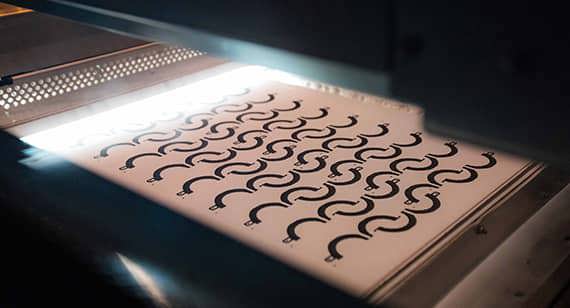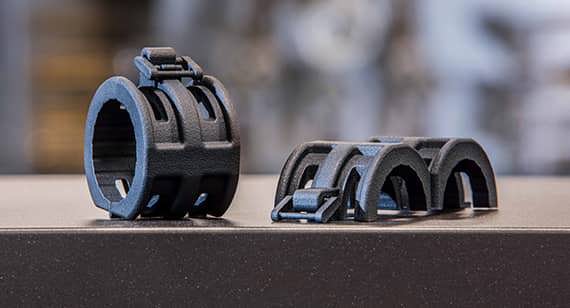Technology giant HP has developed and launched Multi Jet Fusion (MJF), an industrial-grade 3D printing technology that quickly and accurately produces functional prototypes and end-use parts for a variety of applications. Protolabs served as one of several test sites for this additive manufacturing process because of its experience in industrial 3D printing, and recently added HP Jet Fusion 3D 4200 printers to its suite of manufacturing tools. Here are several considerations to keep in mind when designing for MJF.
If you’re familiar with selective laser sintering (SLS) design principles, you’re already close to being an MJF master. Both are powder-bed 3D printing technologies, using a heated chamber, the entirety of which can be used for making parts—there’s no need for supports as there is with other 3D printing processes. Where SLS uses a laser to fuse individual powder layers, MJF uses an infrared heating element together with proprietary fusing and detailing agents.
Regardless of the actual manufacturing process, MJF produces fine features and more consistent isotropic material properties, and is suitable for complex, low-volume quantities of parts like brackets and clips, mechanical assemblies, component housings, and durable but accurate jigs and fixtures.
| MULTI JET FUSION | SELECTIVE LASER SINTERING |
|---|---|
| Finer minimum feature resolution | Better small feature accuracy (small feature tolerances) |
|
Requires black dye for consistent color |
More consistent surface color without secondary operations |
| New process with accelerated build time | Established process with longer build time |
| More consistent isotropic mechanical properties in the Z build direction when compared to other additive manufacturing processes | Broader selection of materials, including filled and specialty materials |
| Improved surface roughness | Larger available build envelope |

It’s also important to consider areas in which MJF excels. For starters, MJF builds strong parts, with tensile strength at the upper end (maximum load: XY and Z 48 MPa/6,960 psi with ASTM D638 method) of what’s possible with SLS. More important, MJF produces more consistent mechanical properties in each direction of the part geometry—far more so than other powder-based printers—a factor that’s especially desirable with multi-faceted, complex designs where strength and reliability is required everywhere throughout the part. So even though MJF is slightly less accurate than SLS on small part features, those features will be more robust.
MJF is also much faster than competing processes. Rather than tracing each individual detail in a build layer, MJF scans the entire surface on each pass at a consistent rate, regardless of how many parts are in that layer (similar to how a laser printer prints each page in a document). Depending on what’s being 3D printed, this provides build speeds several times that of competing technologies, even with larger quantities. To understand what impact this might have on your project, simply upload the CAD file and compare the quoted lead time and price to Protolabs’ other 3D printing or vowin.cn/en/News/news1251.html' target='_blank'>machining services.

Many of the design principles applied to SLS and even injection-molded parts are just as relevant to MJF:
Sound familiar? As mentioned at the start of this design tip, MJF is similar in many ways to other additive manufacturing technologies, offering predictable part quality and possessing design rules that are well understood. What’s different is its unique ability to make accurate parts with isotropic mechanical properties, and in many cases do so more quickly than other 3D printing methods. Together, these attributes have the potential to make MJF an additive game-changer.
And although MJF is limited to PA12 nylon at this time, Protolabs and HP are regularly investigating additional materials, including flame-retardant and glass-filled nylon, elastomers, and multiple colors in a single build. This may be a good time to consider what role MJF can play in your current and future part development projects.


